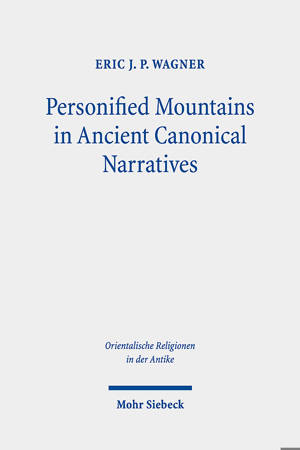
Door een staking bij bpost kan je online bestelling op dit moment iets langer onderweg zijn dan voorzien. Dringend iets nodig? Onze winkels ontvangen jou met open armen!
- Afhalen na 1 uur in een winkel met voorraad
- Gratis thuislevering in België vanaf € 30
- Ruim aanbod met 7 miljoen producten
Door een staking bij bpost kan je online bestelling op dit moment iets langer onderweg zijn dan voorzien. Dringend iets nodig? Onze winkels ontvangen jou met open armen!
- Afhalen na 1 uur in een winkel met voorraad
- Gratis thuislevering in België vanaf € 30
- Ruim aanbod met 7 miljoen producten
Zoeken
Personified Mountains in Ancient Canonical Narratives
Spatial and Mythic Studies of Mesopotamian, Greek, and Hebrew Bible Landscapes
Eric J P Wagner
€ 156,95
+ 313 punten
Omschrijving
Ancient canonical narratives from Mesopotamia, Greece, and the Hebrew Bible fused landscapes (topographic space) and human bodies (corporeal space) when personifying mountains. Built environments (architectonic space) also correlated with these anthropomorphic landscapes. As blends of fundamental spatial categories, such mountains exemplified mythic space and minimally counter-intuitive concepts characteristic of religious cognition. In so far as these personified mountains expressed such "mythic thinking," they invite a re-reading informed by spatial and mythological analysis. Taking up this invitation, Eric J. P. Wagner focuses on the Epic of Gilgames, Homeric epic (the Iliad and Odyssey), and Genesis-2 Kings to identify and analyze personified mountains in each corpus. Ultimately, he traces the meaning(s) and function(s) of these "living landscapes" across each ancient narrative.
Specificaties
Betrokkenen
- Auteur(s):
- Uitgeverij:
Inhoud
- Aantal bladzijden:
- 360
- Taal:
- Engels
- Reeks:
Eigenschappen
- Productcode (EAN):
- 9783161638053
- Verschijningsdatum:
- 1/12/2024
- Uitvoering:
- Hardcover
- Formaat:
- Genaaid
- Afmetingen:
- 231 mm x 155 mm
- Gewicht:
- 839 g

Alleen bij Standaard Boekhandel
+ 313 punten op je klantenkaart van Standaard Boekhandel
Beoordelingen
We publiceren alleen reviews die voldoen aan de voorwaarden voor reviews. Bekijk onze voorwaarden voor reviews.











